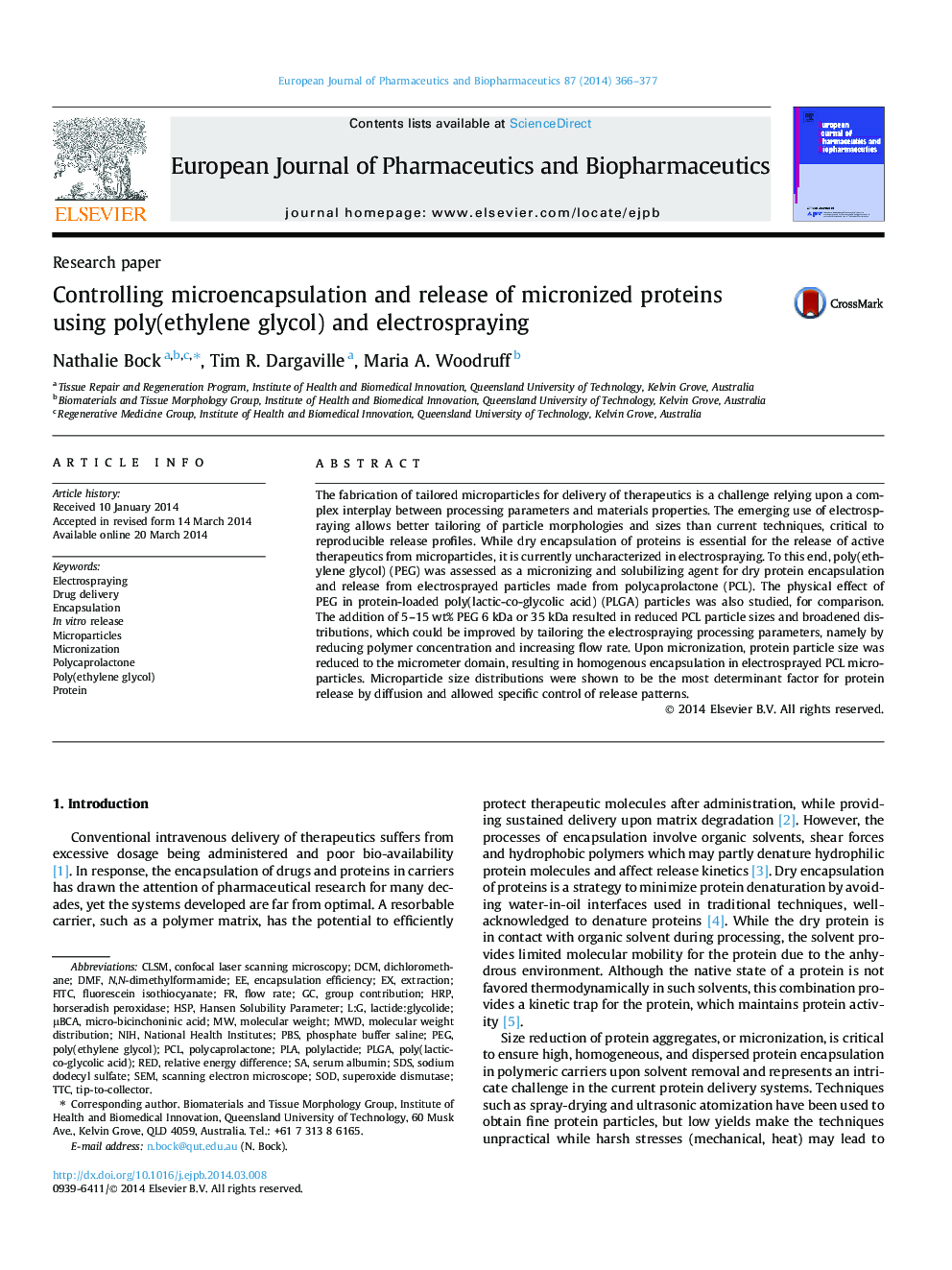| کد مقاله | کد نشریه | سال انتشار | مقاله انگلیسی | نسخه تمام متن |
|---|---|---|---|---|
| 2083569 | 1545341 | 2014 | 12 صفحه PDF | دانلود رایگان |
• Non-aqueous dispersion is used for protein loading in electrosprayed microparticles.
• Polyethylene glycol (PEG) is used as a micronizing and solubilizing agent.
• Electrospraying parameters control particle size distributions and morphologies.
• Micron-size protein particles are evenly loaded in polycaprolactone particles.
• PEG molecular weight tailors release profiles via microparticle size distributions.
The fabrication of tailored microparticles for delivery of therapeutics is a challenge relying upon a complex interplay between processing parameters and materials properties. The emerging use of electrospraying allows better tailoring of particle morphologies and sizes than current techniques, critical to reproducible release profiles. While dry encapsulation of proteins is essential for the release of active therapeutics from microparticles, it is currently uncharacterized in electrospraying. To this end, poly(ethylene glycol) (PEG) was assessed as a micronizing and solubilizing agent for dry protein encapsulation and release from electrosprayed particles made from polycaprolactone (PCL). The physical effect of PEG in protein-loaded poly(lactic-co-glycolic acid) (PLGA) particles was also studied, for comparison. The addition of 5–15 wt% PEG 6 kDa or 35 kDa resulted in reduced PCL particle sizes and broadened distributions, which could be improved by tailoring the electrospraying processing parameters, namely by reducing polymer concentration and increasing flow rate. Upon micronization, protein particle size was reduced to the micrometer domain, resulting in homogenous encapsulation in electrosprayed PCL microparticles. Microparticle size distributions were shown to be the most determinant factor for protein release by diffusion and allowed specific control of release patterns.
Figure optionsDownload high-quality image (229 K)Download as PowerPoint slide
Journal: European Journal of Pharmaceutics and Biopharmaceutics - Volume 87, Issue 2, July 2014, Pages 366–377
